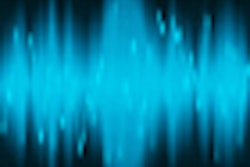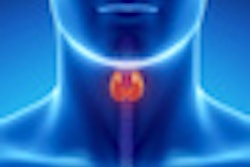
The Canary photothermal caries detection system can accurately detect caries beneath dental sealants, according to a presentation Wednesday at the International Association for Dental Research (IADR) meeting in Iguaçu Falls, Brazil.
The Canary system is a low-powered laser-based device that uses photothermal radiometry and modulated luminescence to directly examine the crystal structure of teeth and map areas of tooth decay.
For the IADR presentation, researchers from Quantum Dental Technologies -- developers of the Canary -- the University of Toronto, University of Texas Health Science Center at San Antonio, and Procter & Gamble collaborated to determine the influence of 3M ESPE's Clinpro sealant on Canary number readings.
"Dental sealants are an excellent way to prevent caries in newly erupted pits and fissures of posterior teeth," stated Stephen Abrams, DDS, CEO of Quantum Dental, in a press release. "Unfortunately, over time, they leak allowing the ingress of oral fluids and bacteria leading to caries, which cannot be detected by traditional methods, until the lesions are sufficiently large."
He and his colleagues compared the Canary's ability to detect decay beneath the sealant with that of the Diagnodent and International Caries Detection and Assessment System (ICDAS) II visual scoring on 28 extracted human teeth with 103 potential healthy and carious pits/fissures on their occlusal surfaces. After scanning the teeth with both systems, the researchers sealed the teeth with Clinpro, then rescanned the same sites with both systems. They then used polarized light microscopy (PLM) to examine the sites and score them as carious or noncarious.
Using PLM as the gold standard, the researchers found that sensitivities and specificities of the Canary, Diagnodent, and ICDAS II before sealant placement were 0.92/0.70, 0.41/1.0, and 0.77/0.90, respectively. After sealant placement, these scores were 0.83/0.79 for the Canary and 0.64/0.46 for the Diagnodent.
The study highlighted the potential of the Canary system to assist dental professionals to detect the presence of caries beneath sealants, the study authors reported. "The caries detection ability of the Canary system was not affected by sealant and was more accurate than Diagnodent."
Around restorations
In a second study to be presented June 22 at the IADR meeting, the same research team evaluated the ability of the Canary system to detect natural decay around composite restorations compared with the Diagnodent.
For this study, a dentist used a round bur to remove carious tissue from five extracted molars and premolars with cavitated caries lesions, leaving some decayed tissue on the floor and wall of the cavity.
A 1-mm caries-free margin below the tooth surface was created along the walls of the cavity to allow for bonding a composite to caries-free tooth structure. The teeth were restored with etching and bonding, then 48 test sites at the margin of the restoration, 0.5 mm, and 1 mm away from the margins were scanned using the Canary and the Diagnodent.
Subsequent analysis found that the Canary system was able to detect decay at the margin of restoration and at 0.5 mm away, while the Diagnodent was able to detect decay only at the margin of restoration, according to the researchers.
"This study suggests that the Canary system has the potential to detect secondary caries around composite restoration more accurately than Diagnodent," they concluded.



















